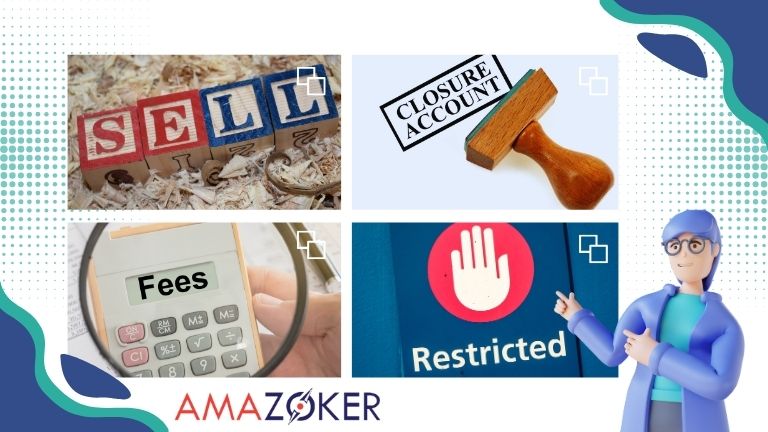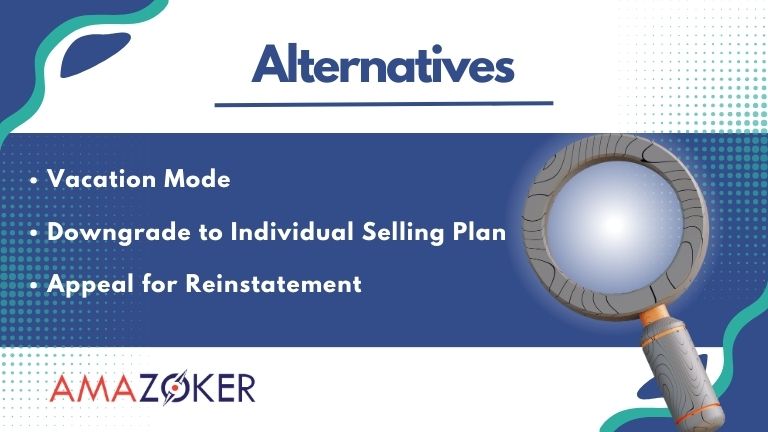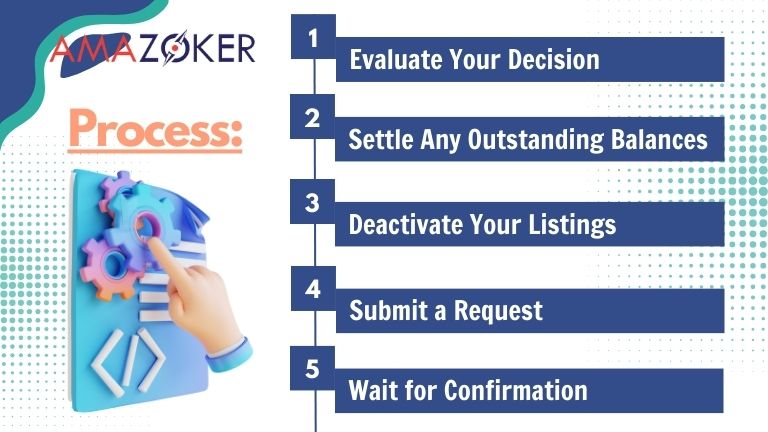Are you considering closing your Amazon seller account? Whether it’s due to a change in business plans or unsatisfactory performance, cancelling your account is a significant decision that requires careful consideration. In this comprehensive guide, we’ll walk you through the process of cancelling Amazon seller account and provide you with all the necessary information to make an informed decision.
Table of Contents
What happens when closing Amazon seller account
Closing your seller account involves permanently deactivating it, severing your ties with the Amazon Marketplace. This action entails several consequences:
- Loss of selling privileges: When you make the decision to close your Amazon seller account, it is essential to understand that this action will result in the removal of all your listings and orders from the platform. Essentially, this means that you will no longer have the opportunity to sell products on Amazon and any pending orders will be automatically cancelled.
- Account closure: Furthermore, closing your seller account also means that you will lose access to all the tools and features that come with it. This includes important resources such as sales reports, inventory management, and customer communication tools. It’s important to consider the impact this will have on your business operations and whether there are alternative solutions that may better suit your needs.
- Outstanding fees: You’ll need to settle any outstanding account balances before closure. Any pending orders that you have at the time of closing your seller account will be cancelled. This means that customers who have placed orders for your products will no longer receive them, and they will be refunded for their purchases.
- Future restrictions: Reopening a seller account might be challenging, with potential limitations depending on the reason for closure. Once your account is closed, you will not be able to reopen it or create a new account using the same information.

There are several consequences when closing Amazon seller account
In some cases, closing your Amazon seller account may be necessary due to various reasons such as changes in business strategy or personal circumstances. Ultimately, it’s important to carefully consider the implications of closing your Amazon seller account and ensure that it aligns with your long-term goals and objectives. It may also be helpful to seek advice from other experienced sellers or consult with Amazon’s customer support team for further guidance.
When should we close Amazon seller account
Deciding when to close your Amazon seller account depends on various factors. Here are some situations where cancelling Amazon seller account might be the best option:
Your Business is No Longer Operating
If you’ve shut down your business or stopped sourcing products, maintaining an active account becomes unnecessary. In such cases, closing your account can save you from incurring additional fees and expenses.
Unsustainable Performance
Low sales, high fees, or profitability issues might make continued selling impractical. If you’ve exhausted all options and still can’t improve your performance, closing your account might be the best course of action.
Alternatives to Closing Your Amazon Seller Account
Closing your Amazon seller account isn’t always the only solution. Depending on your situation, here are some alternatives you could consider:
- Vacation Mode: If you’re temporarily unable to manage your account, you can put it on vacation mode. This option allows you to pause your listings and orders for up to six weeks without affecting your account’s status.
- Downgrade to Individual Selling Plan: If you’re facing financial constraints, you can switch from a Professional Selling Plan to an Individual Selling Plan. This option reduces your monthly subscription fees but limits the number of products you can list.
- Appeal for Reinstatement: If your account was suspended or deactivated due to policy violations, you could appeal for reinstatement. However, this process can be lengthy and requires providing evidence to prove your compliance with Amazon’s policies.

Explore alternatives to Closing Your Amazon Seller Account
Instead of immediately closing your Amazon seller account when facing issues, it is advisable to explore alternatives. Contacting Amazon’s customer service and seeking their assistance can often resolve problems and restore your account.
Should you close your account or suspend it?
If you’re simply looking to take a break from selling on Amazon, you may want to consider suspending your account instead of closing it. When you suspend your account, your listings will be temporarily removed from the website, but you will still have access to your seller account dashboard. This can be a good option if you plan on returning to selling on Amazon in the future. However, if you’re sure that you no longer want to sell on Amazon, closing your account may be the best option.
In some cases, pausing your account may be a better option than closing it permanently. If you’re having problems with your account, but still want to continue doing business on Amazon, pausing your account may be a way to give you time to resolve the issue without losing your ability to sell on Amazon. .
If your account is suspended, you will not be able to post new products or fulfil new orders. However, your account is still active and you can use this time to resolve the issues you are experiencing. Once the issue is resolved, you can request to reopen your account and continue doing business on Amazon.
How to Cancel Amazon Seller Account
Cancelling Amazon seller account involves a few simple steps. However, it’s crucial to follow them carefully to ensure a smooth and hassle-free process. Here are steps on how to deactivate Amazon seller account.

The process of Cancelling Amazon seller account
Step 1: Evaluate Your Decision
Before initiating the cancellation process, take some time to evaluate your decision. Consider the reasons behind your choice and whether there are any alternatives. For instance, if you’re facing performance issues, you could try improving your sales strategies or seeking professional help before deciding to close your account.
Step 2: Settle Any Outstanding Balances
If you have any outstanding fees or charges, make sure to settle them before closing your account. Failure to comply with this requirement may lead to delays or complications during the cancellation procedure.
Step 3: Deactivate Your Listings
Before closing your account, you’ll need to deactivate all your listings. This step is crucial as it ensures that you won’t receive any new orders or have any active listings once your account is closed.
Step 4: Submit a Request to Close Your Account
To initiate the cancellation process, log into your Seller Central account and go to the “Settings” tab. From there, select “Account Info” and click on “Close Your Account.” You’ll then be prompted to fill out a form with your reason for closure and other necessary information. Once submitted, Amazon will review your request and proceed with the account closure.
Step 5: Wait for Confirmation
After submitting your request, you’ll receive an email from Amazon confirming the closure of your seller account. This email will also include any final steps or instructions you need to follow.
Cancelling Amazon seller account is a big decision that should not be taken lightly. Whether you’re looking to take a break from selling or you’re ready to move on to a new venture, it’s important to understand the process and implications of closing your account. By following the steps outlined above, you can ensure that your account is closed properly and that you can move on to the next chapter in your business journey.
read more
IP Complaint Amazon: What You Need to Know and How to Deal with It
What Does Amazon Certified Mean? A Guide to Buying Refurbished Products on Amazon











